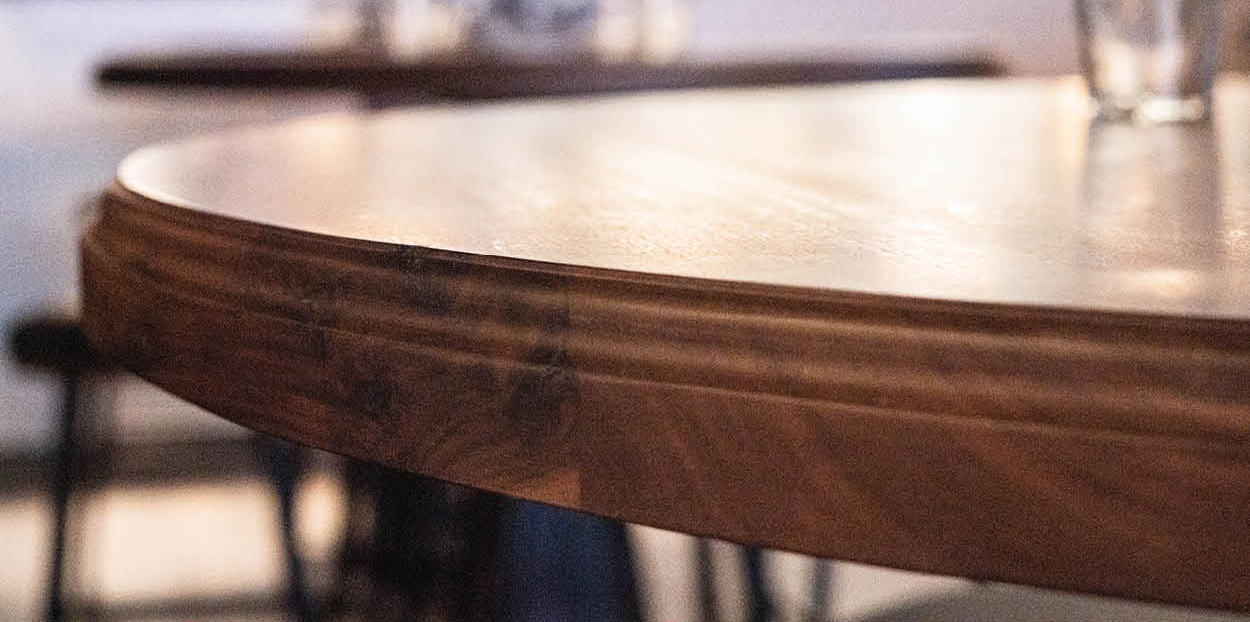Why do we use solid hardwoods vs. laminate?
Laminate tabletops can be a good short term option; they're inexpensive, come in many colors and patterns, and are easily accessible. However, laminate tops are not as durable as other options and there is no way to repair them once they are chipped, scratched or worn. As a manufactured product made with synthetic materials, laminate will always have unnatural appearance and feeling and will never be able to fill the biophilic need that people have to touch natural materials. Studies have shown that people can feel the difference between real and faux wood products.
Many laminate manufacturers boast sustainability in their production processing; however, this is only one aspect of sustainability. At the end of the day, furniture made of non-natural materials accounts for a large portion of landfill waste. A wood tabletop can be re-made into something else or chipped down for repurposed use. After laminate furniture has lived its purpose it is often thrown away.
Why do we use solid hardwoods vs. veneer?
While many veneers used in the market are made of the same hardwoods you see in our furniture, we still believe in using solid hardwoods over a veneer. There are two main reasons why:
Durability and longevity – solid hardwood is timeless. In a commercial environment, a hardwood tabletop will be able to hold up against the wear and tear of regular contact and heavy use. It's easier to fix, refinish, and repurpose than a veneer – should this ever be needed.
Biophilia – the look and feel of solid hardwood is not only beautiful but research shows there are mental and physical health benefits from being around nature and materials made from nature. People are happier and feel better when surrounded by natural materials.

Laminate is a manufactured product made by gluing synthetic materials to a core material, such as MDF.
Pros:
-
- Inexpensive
- Easily accessible
- Variety of color/pattern options
Cons:
-
- Lower quality
- Can't be refreshed/refinished
- Manufactured appearance
- Less durable
Veneer is a manufactured product made by taking thin sheets of wood and applying them to a core material.
Pros:
-
- Medium price point
- Looks more like solid wood
- Lightweight
- Option to refinish
Cons:
-
- Can scratch easily
- Difficult to repair
- Core could have synthetic materials
- Could be prone to moisture issues
- Can be damaged during moving
Hardwood is a natural product made from the trunks of deciduous trees such as white oak, black walnut, and hard maple.
Pros:
-
- Timeless look
- Natural variation and character
- Durable
- Can be easily refreshed/refinished
- Sustainably harvested
- Supports biophilic design
- Increases in value over time
Cons:
-
- Can cost more than other materials
- Heavier than manufactured options
- Extreme climate fluctuations can cause warping
We value the materials and craftsmanship that make our tabletops possible. Our wood is sustainably harvested in Ohio and surrounding states. It is examined and cut into staves by our skilled Wood Shop team and finished by hand with pride and care. Our furniture is priced with this value in mind and knowing that it will stand the test of time.

